Growing up, I used to rope with guys who reached, and I’d ride defensively as a heeler. I used to cut in at the shoulder and rope them going away from me, and I’d pull my horse into the stop right there. As I got older, I kept roping that way, and it was the worst thing for me. I’ve learned that riding around the steer, being more patient and roping them without ever losing sight of the feet is a much more consistent shot. The ability to do that comes from riding better, more broke horses, and it’s something that’s set guys like Rich Skelton apart for years. Nowadays, Jade Corkill, Paul Eaves, Brady Minor and Justin Davis are great at it. They build consistency with their horses that comes from letting them make a mistake and then showing them what they’re supposed to do instead of pulling on them the whole way and pulling off shots.
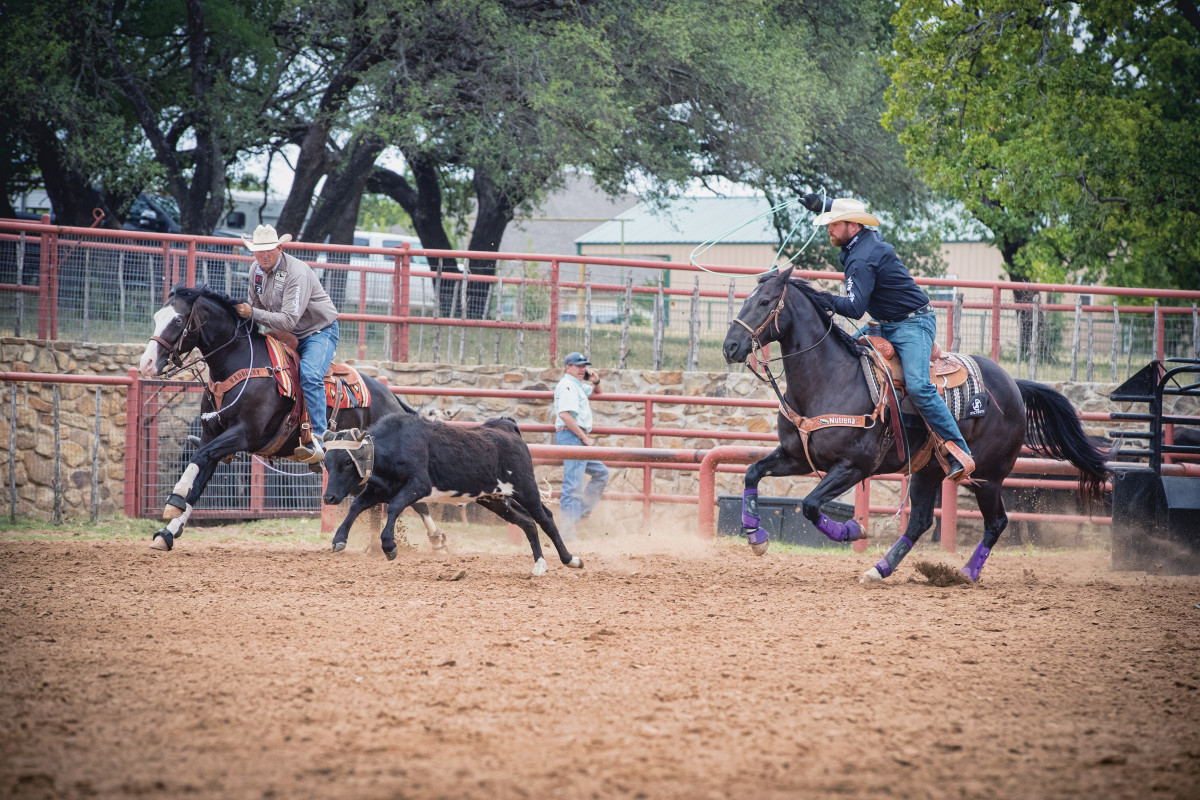
A lot of guys leave the box already pulling on their horses. I like a horse that you can put your hand all the way down leaving the box, pick the horse up at the spot then put your hand back down. The horses I ride maintain the speed I set them at. If I pick up on them to get them to slow down, I want them to stay at the speed I pull them down to. It’s like setting the cruise on a truck. Some horses, you can slow them down with your hand, and then as soon as you put your hand down, they speed back up.
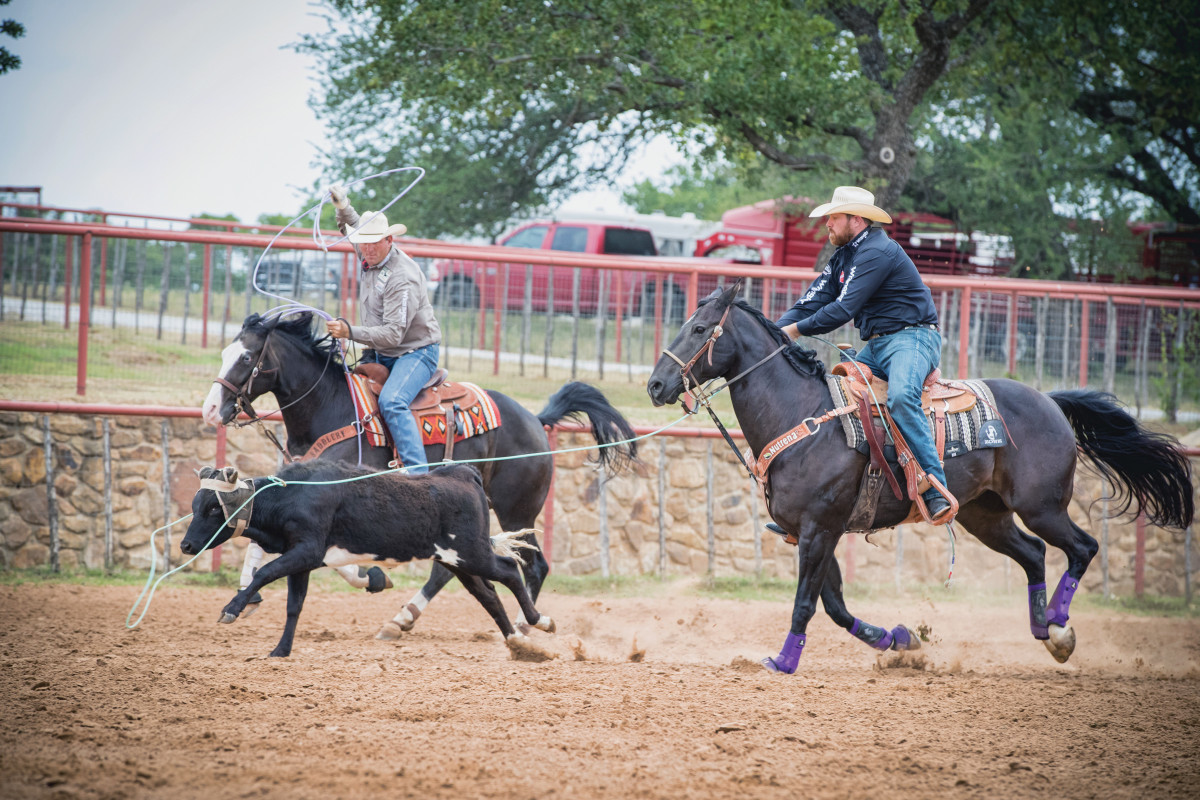
Teaching your horse to stay at the speed you ask takes time. It’s lots of give and take and backing him off. It starts with loping around and warming up. If he speeds up loping a circle, I hold him and slow it down to the speed I want, then give it back to him. If he wants to keep being strong and running, I go to the one-rein stop. I try some Clinton-Anderson riding, and I pull them into the ground and make them think about something else. If I’ve got one that wants to go fast and I can’t get through to him through the give and take, I’ll push him and make him go faster, then I’ll back him back down and see if he’ll stay. I’ll relax my legs and see if he’ll slow down on his own, and then back him back down to the speed where I want him. It’s about a lot of release.
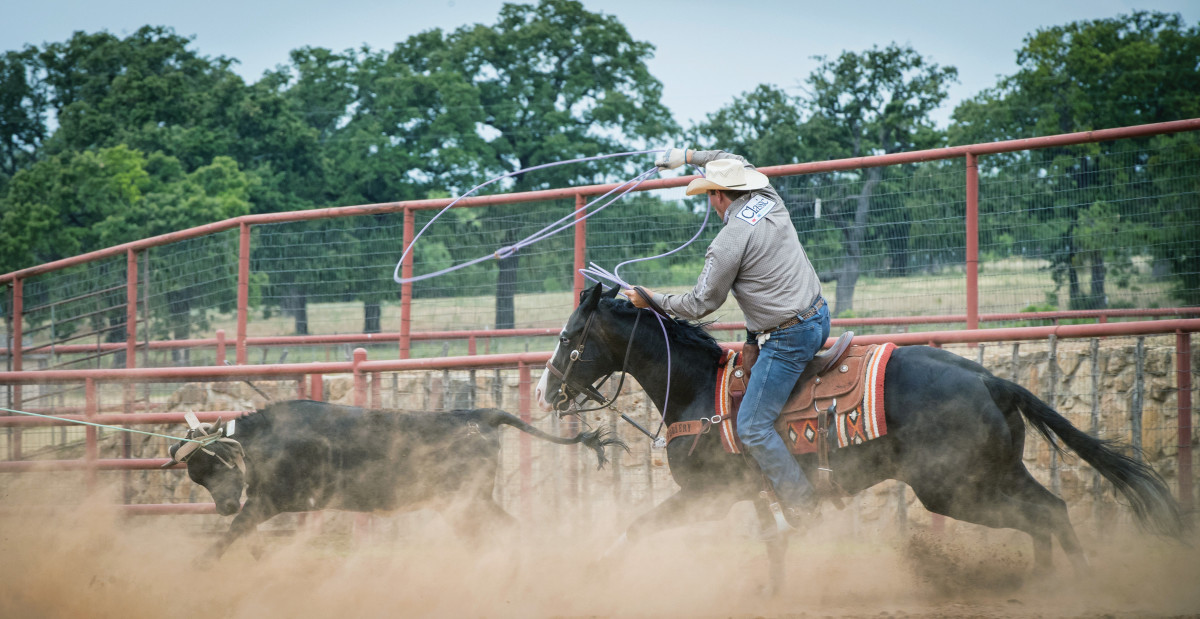
Heading into the corner, my hand is pushed up squeezing him in there. A lot of guys are constantly pulling on their horses through the corner, and that’s mainly because they’re pulling themselves forward to rope. When you’re holding your horse back the whole time, it’s the equivalent of having your parking brake on when you’re driving your truck. When you are pulling the whole way, you don’t have much more to pull when you want to stop. That comes into training and riding—when he makes a mistake, you correct him rather than hang on him the whole time telling him what to do. If you let him make mistakes and then correct him, pretty soon you won’t have to correct him anymore. You can almost ride him without reins in your hand. Because you’re not showing him every little thing to do every time, before long he is doing it on his own and you’re not having to help. You can take one and ride him five years. But to make a good, solid consistent horse in a year, you’ve got to let him make mistakes and lightly correct him. Let him go a stride too far then slow him down, put him back in there and let him go catch the steer.
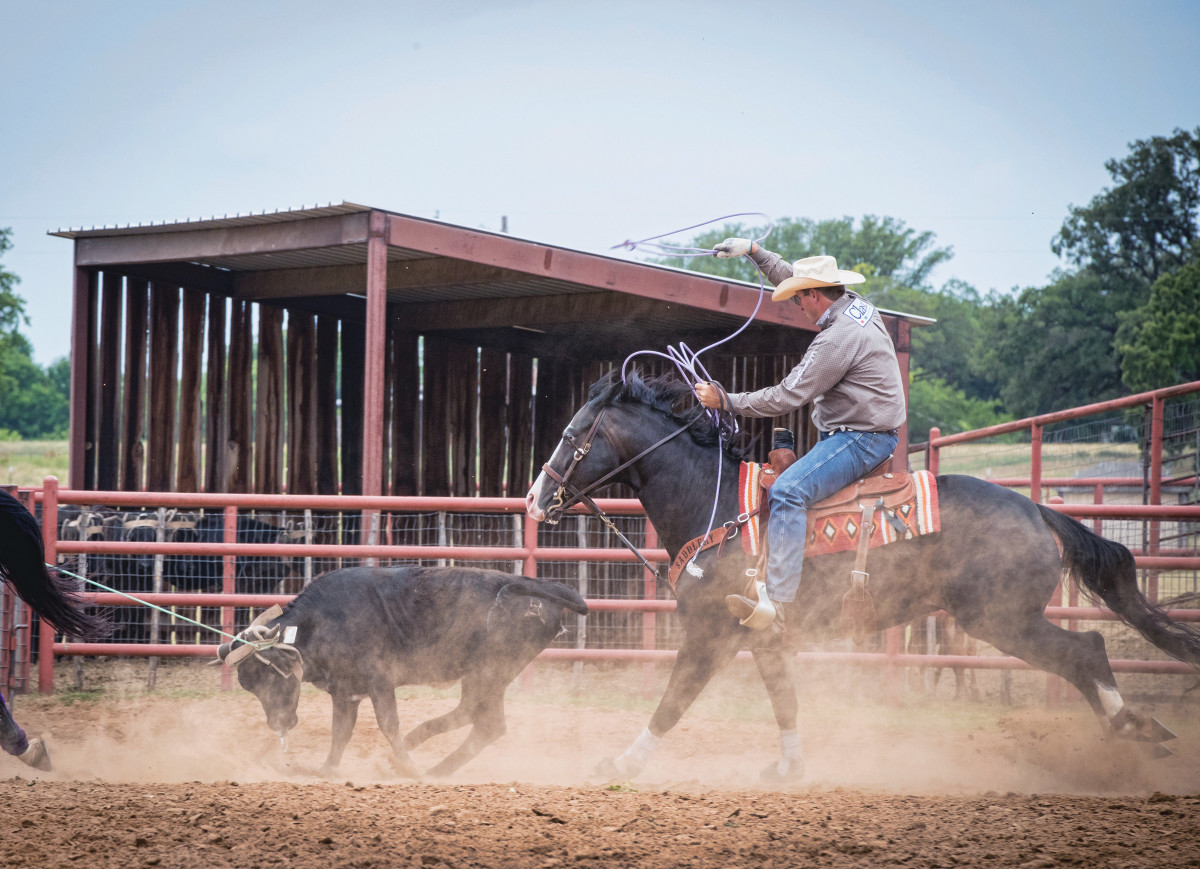
I try to get to the same position every time before I rope, and that goes back to my horsemanship. The more I can show a horse the right spot to be when I throw, the easier it is for him down the road. Say I get out of position one time or drift by a steer, instead of taking a bad shot over his neck, I let him come back to that steer and get into position before I rope. Next time he won’t step as far by. He might just take a half stride by and go back to his spot. I let him make the mistake then correct him back to where he’s supposed to be so I can show him the right spot every time. Before long, he won’t make that mistake.
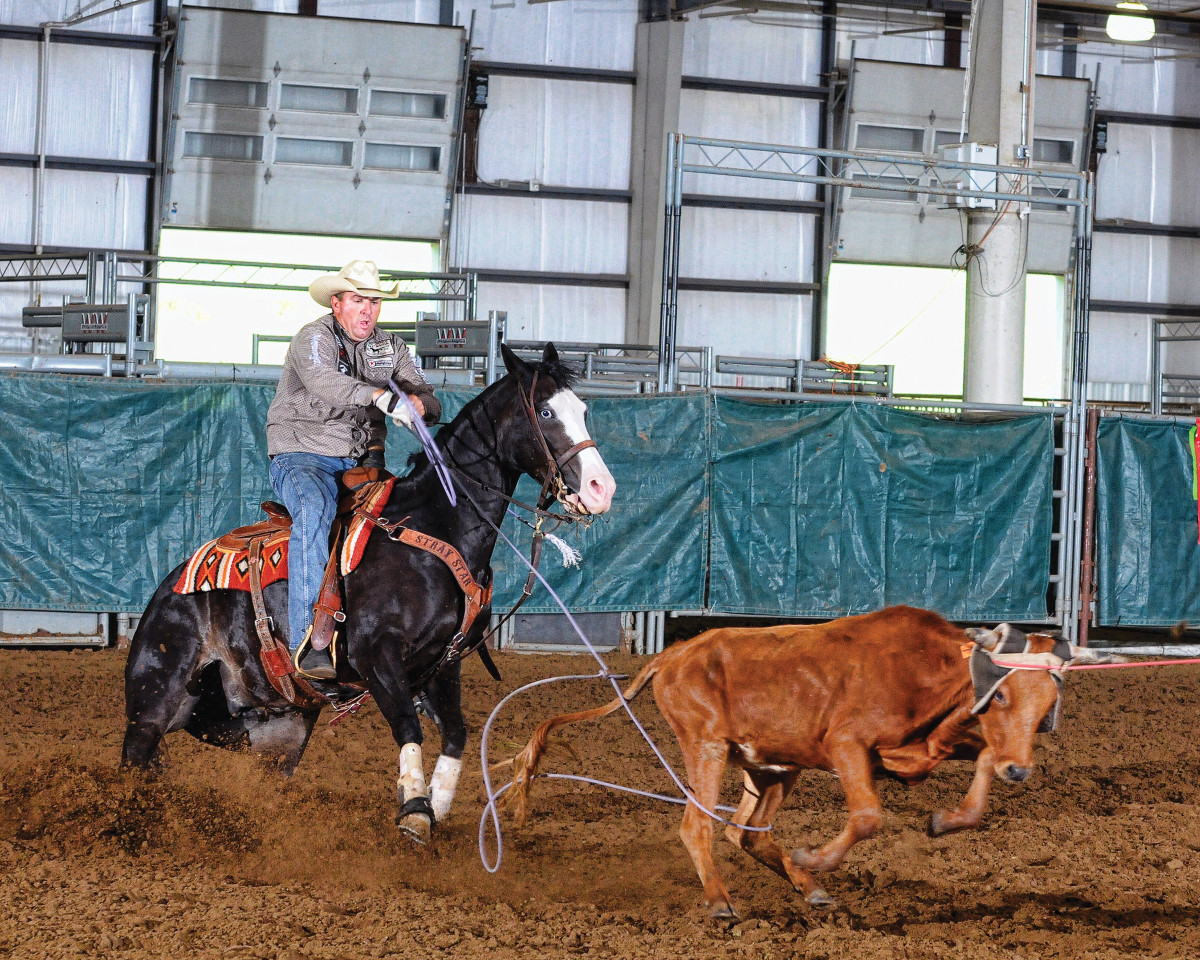
Because I come from the horse show world, I want to generate more slide in my stop. To do that, I’ve got to speed my horse up a little bit as I throw. As I get ready to throw, I’ve got to squeeze that horse and speed him up a little bit. I’m bad about throwing as soon as I get to the steer. I can cruise around and throw as soon as I get there. But Clay Logan told me if I’d quit doing that, I’d get more carry out of my slide. I’ve really started working on throwing after tracking three or four strides when I’m practicing. I get to that spot and make him stay there, and then when I get to a show I can come around there and maybe throw where I like to right on the corner, and that horse really slides through it because he is moving on his front end. SWR








